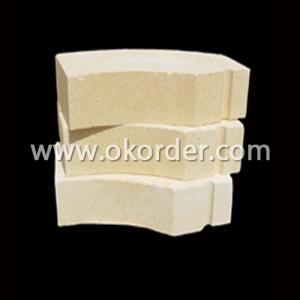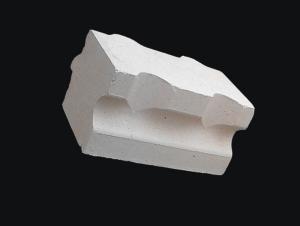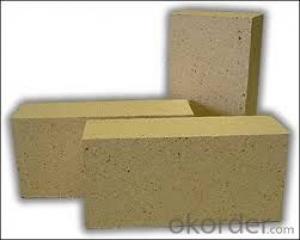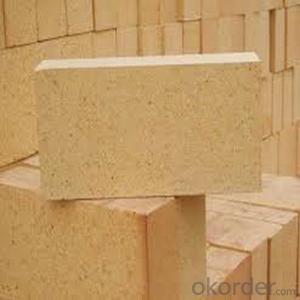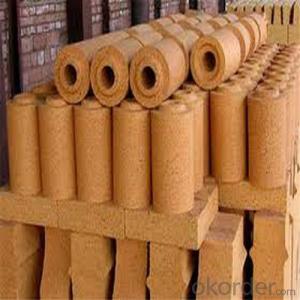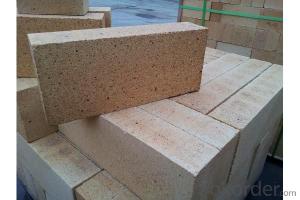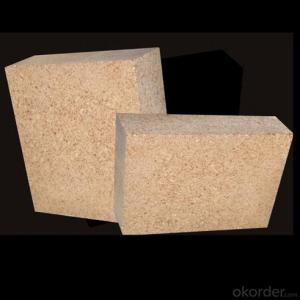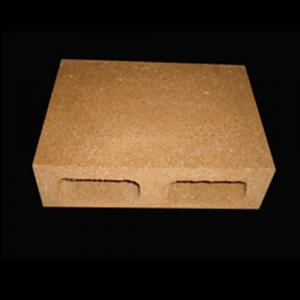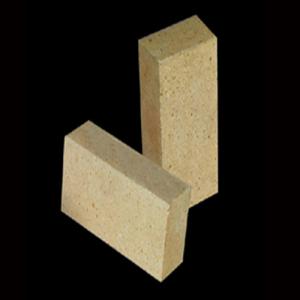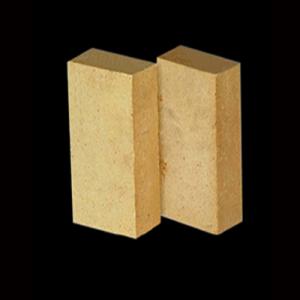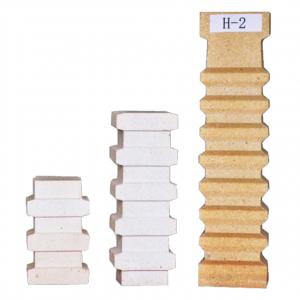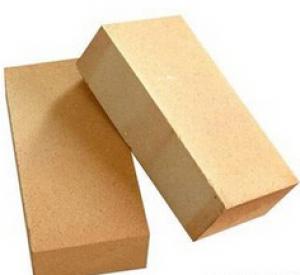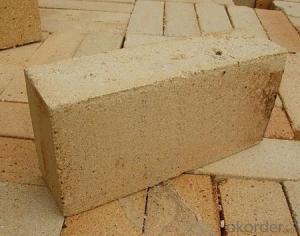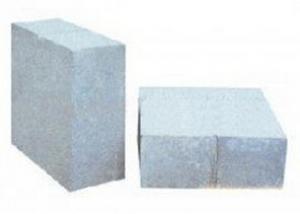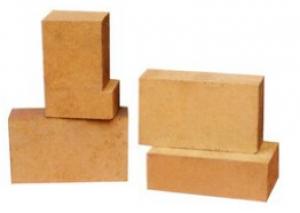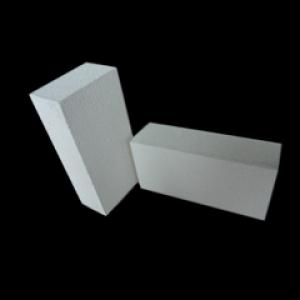Refractory Bricks for Insulating Use from CNBM
- Loading Port:
- Shanghai
- Payment Terms:
- TT OR LC
- Min Order Qty:
- 10 m.t
- Supply Capability:
- 8000 m.t/month
OKorder Service Pledge
OKorder Financial Service
You Might Also Like
Refractory Bricks for Insulating Use from CNBM
Firebricks Description
High alumina insulating fire brick is a kind of insulation material adopting organic matter as ignition loss substance in order to increase the porosity of refractory,which has such advantages as high porosity, small volume density,good insulation effect,high mechanical intensity,small thermal conductivity and long service life.For various industrial kilns&furnaces,it is a kind of essential refractory for energy saving and temperature preservation.This series of High Alumina fire resistant brick are made of selected high alumina bauxite, kaolin caly,hollow microsphere as the mian material.By shaping at high pressure and sintering at high temperature.
Firebricks Application
High alumina bricks are commonly used in blast furnace,hot blast furnace,the roof of electric furnace,teeming ladle,rotary kiln,regenerator etc.
Firebricks Features
.Low thermal conductivity
.Excellent acid and base slaging resistance
.High refractoriness
.Excellent thermal shock resistance
.Excellent mechanical strength
Firebricks Specification&Pictures
ITEM | UAL48 | UAL55 | UAL65 | UAL75 | UAL80 | UAL85 | ALP80 |
Refractoriness, ℃ | 1750 | 1770 | 1790 | 1790 | 1810 | 1810 | 1810 |
Apparent Porosity,% | 22 | 22 | 23 | 23 | 20 | 20 | 18 |
C.C.S, Mpa | 39 | 44 | 49 | 53 | 55 | 60 | 100 |
Refractories Under Load (0.2Mpa),℃ | 1420 | 1470 | 1500 | 1520 | 1500 | 1520 | 1550 |
Reheating Linear Change,% | 1450℃x2h 0.1~-0.4 | 1500℃x2h 0.1~-0.4 | 1500℃x2h 0.1~-0.4 | 1500℃x2h 0.1~-0.4 | 1550℃x2h -0.5~+0.5 | 1550℃x2h -0.5~+0.5 | 1550℃x2h -0.5~+0.5 |
Al2O3 Content , % | 48 | 55 | 65 | 75 | 80 | 85 |

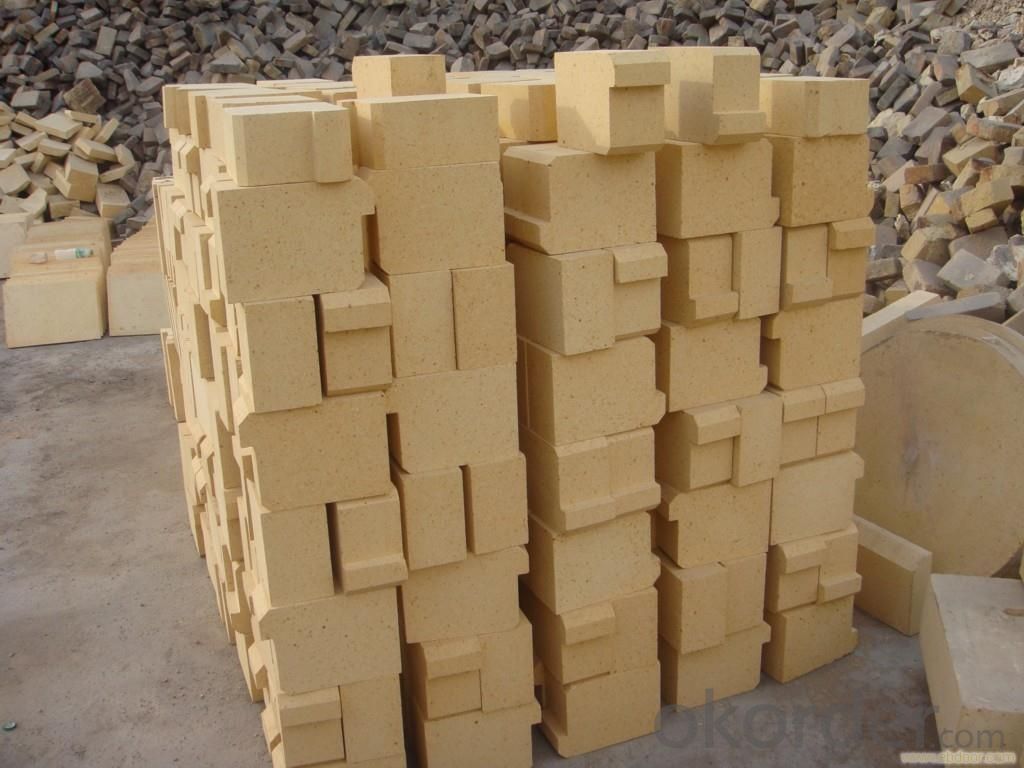
FAQ
Q1 What’s the transport method?
A1 FCL delivery goods with wooden pallet or wooden case by sea; If LCL delivery, must with wooden case; Sometimes need open top, flat rack or bulk cargo.
Q2 What’s the required payment term?
A2 Generally 30% TT as the prepayment, 70% TT before delivery. If need, 100% Irrevocable Letter of Credit or negotiation.
Q3 Which country are our products exported to?
A3 Apart from entire Chinese market, the US, Russia, Japan, Korea, Australia and some Southeast Asian Nations.
- Q:What is the difference between T3 refractory bricks and high alumina refractory bricks?
- High aluminum refractory brick brick is all in one type of material classification, the material is AL2O3 high bauxite content above 55%, refractory brick by material into clay bricks, high aluminum brick brick brick corundum brick
- Q:What are the requirements for refractory materials in heat treatment furnace?
- Refractoriness is the property of a refractory against high temperature, which means the temperature at which a refractory is softened to some extent after heating, but not its melting point. According to the degree of refractory, refractory materials can be divided into: General refractories, refractory degree is 1580 to 1770 DEG C; advanced refractories, refractory degree is 1770 to 2000 DEG C; special refractory material, refractory degree is greater than 2000 DEG C.
- Q:What are ordinary bricks, refractory bricks, hollow bricks?
- Hollow brick is divided into cement hollow brick, clay hollow brick, shale hollow brick. In March 2011 Yunnan Yingjiang earthquake occurred in 5.8, the use of cement hollow brick houses collapsed and killed several people, due to safety concerns that Yunnan intends to disable the cement brick, Shandong Qingdao in the construction of real estate has also been halted the use of cement hollow brick. Professional claims in the construction industry argue that the prohibition of the use of such statements is unscientific and unprofessional. Misleading the public, it must be corrected. Hollow brick is only a kind of building material, and it is no problem to use it in scientific way. Hollow brick in use is very scientific, high quality requirements, the investigation of the foundation is suitable for the use of hollow bricks, how to design, construction, cement and other related ingredients, there are no problems. According to strict procedures, scientific use, strict implementation of relevant national standards, the use of qualified hollow bricks, there is no problem. Similarly, if the use of solid bricks does not strictly comply with the relevant standards of the state, the same will be a problem.
- Q:The cloth blowing is not uniform on the lime kiln refractory brick is damaged it
- People with the shaft kiln cement clinker kiln, because of small size, low calcination temperature, using only Al2O3 containing a single clay brick is 30 ~ 40%, the rotary kiln was improved in the early Yuan faith this experience, use of high alumina brick and clay brick, from 60s onwards, due to large scale kiln and to strengthen the operation of the high temperature parts of kiln lining, alkaline brick masonry is widely used, the main varieties are: magnesia chrome brick, magnesia spinel brick and dolomite brick.
- Q:Refractory brick, high alumina brick, magnesia chrome brick, magnesia brick, clay brick, which type of high temperature refractory brick?
- High alumina brick clay brick up to 1700 degrees above 1500 degrees -1750 degrees of magnesia brick and magnesia chrome brick 1500-1650 degrees, I is the production of clay brick, brick my temperature at 1500-1700 degrees. Specific depends on what kiln, brick is only part of it
- Q:Aluminum content 38, silicon content 55 What refractory bricks?
- High alumina brick:The mineral composition of the high alumina brick is determined by the bauxite used. The mineral composition of the clinker is usually mullite, corundum and glass. The theoretical composition of mullite is Al2O371.8%, SiO2 28.2%, and its melting decomposition temperature is 1840 DEG C. With acicular crystal, network cross structure, high temperature state showed better strength. Corundum in the form of alpha -Al2O3, melting point of 2050 degrees, hardness of Mohs 9, showing a granular and columnar crystal, has good chemical stability, acid, alkaline slag have a certain resistance. Based on the composition of mullite minerals, the phase composition of high alumina brick can be judged according to the content of Al2O3. When the bricks are below Al2O3 71.8%, the base of the composition is mullite and SiO2, such as grade LZ-48 bricks. Because it contains a large number of SiO2 formed in the liquid phase under high temperature is 20% ~ 30%; brick in Al2O3 more than 71.8%, the excess Al2O3 formed corundum crystal under high temperature, while generating 2 high temperature phase, eutectic temperature rise by the low content of Al2O3 brick 1595 C to 1840 C, such as grade LZ-75 brick. In fact, it is impossible to produce a complete phase equilibrium in the process of production, but the glass phase is very small, and there is no more than 10% in the partial gap of the Yu Jing phase
- Q:The difference between clay bricks and clay bricks
- Sintering bricks do not have clay bricks, so sintering bricks are made of stone. Clay brick is clay cooking, two yo, qualitative difference, but the appearance and color almost, but the quality is very different, life expectancy is also a great gap.
- Q:Can high alumina brick resist carburizing?
- The key is to look at the content of Fe3O2 metal oxides (so-called anti carburizing brick generally refers to the content of Fe3O2 less than 1% clay brick and Gao Lvzhuan) just a photo shoot, out for everyone to see, high alumina brick common in reductive atmosphere has been chalking up.
- Q:What are the specific raw materials for plastic pallets?
- There are two kinds of raw materials for plastic pallets: one is polypropylene (PP) and the other is polyethylene (HDPE).Plastic pallets for logistics storage: pp+pe material, recycled material 10%;Plastic trays for food trays: food grade PP, PE, pc;Polyethylene (HDPE) has excellent impact resistance and cold resistance, and it can resist environmental stress cracking. Excellent chemical stability, good oil resistance. Water absorption and tiny, low permeability, organic vapor transmission rate is larger. Electrical insulation is good, in all frequency range, dielectric properties are extremely excellent.
- Q:How high can aluminum bricks expand at 80O degrees of heat?
- The expansion of high alumina brick is not only related to temperature, but also related to its material composition. The refractory temperature of high alumina brick is above 1770 centigrade. The temperature of 800 DEG C has little influence on the expansion of high alumina brick.
1. Manufacturer Overview |
|
|---|---|
| Location | |
| Year Established | |
| Annual Output Value | |
| Main Markets | |
| Company Certifications | |
2. Manufacturer Certificates |
|
|---|---|
| a) Certification Name | |
| Range | |
| Reference | |
| Validity Period | |
3. Manufacturer Capability |
|
|---|---|
| a)Trade Capacity | |
| Nearest Port | |
| Export Percentage | |
| No.of Employees in Trade Department | |
| Language Spoken: | |
| b)Factory Information | |
| Factory Size: | |
| No. of Production Lines | |
| Contract Manufacturing | |
| Product Price Range | |
Send your message to us
Refractory Bricks for Insulating Use from CNBM
- Loading Port:
- Shanghai
- Payment Terms:
- TT OR LC
- Min Order Qty:
- 10 m.t
- Supply Capability:
- 8000 m.t/month
OKorder Service Pledge
OKorder Financial Service
Similar products
New products
Hot products
Related keywords



